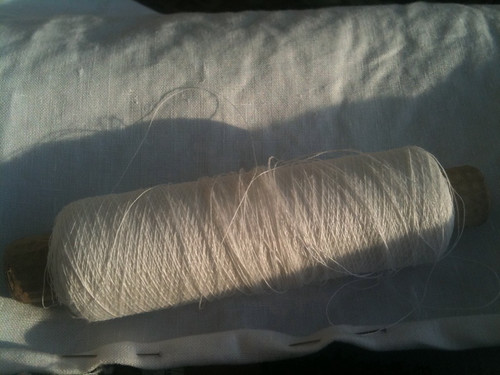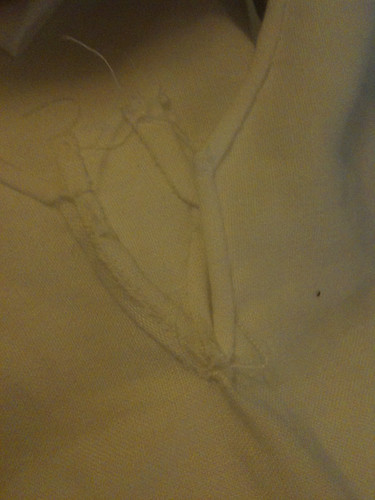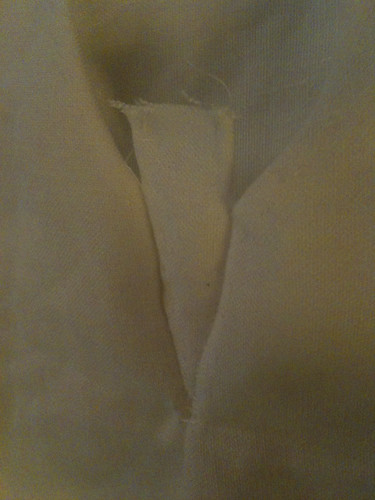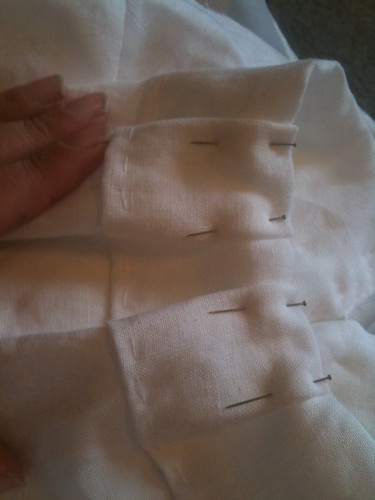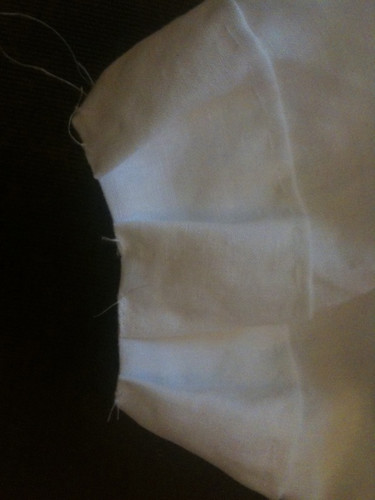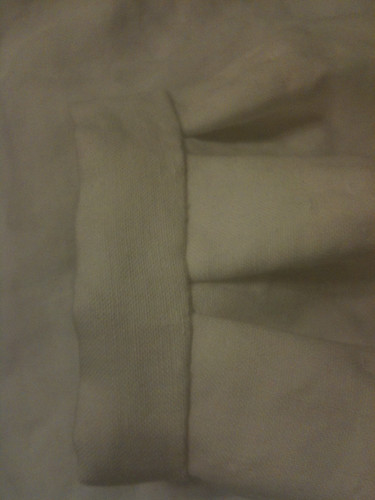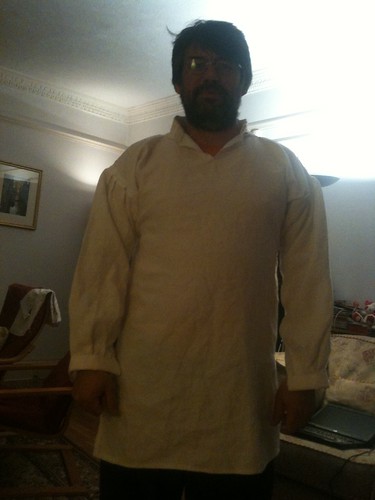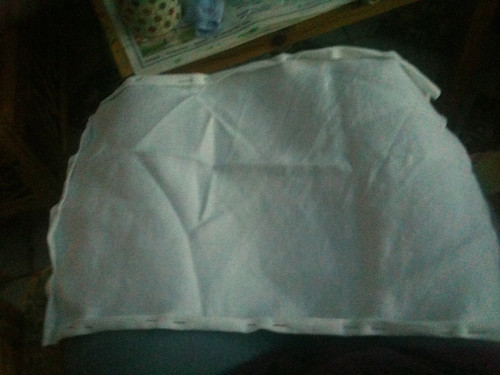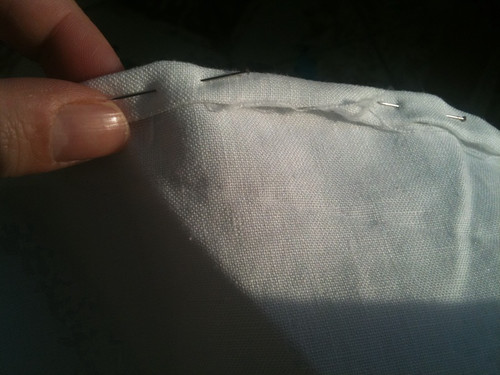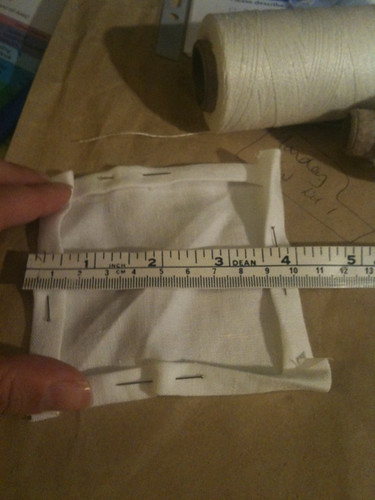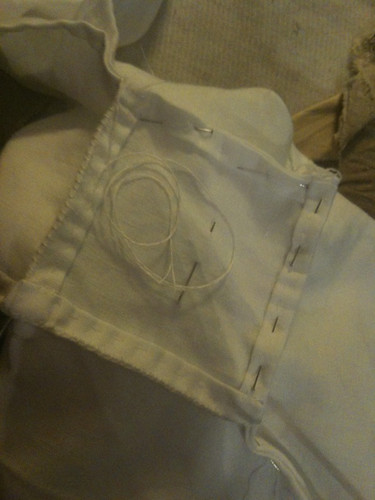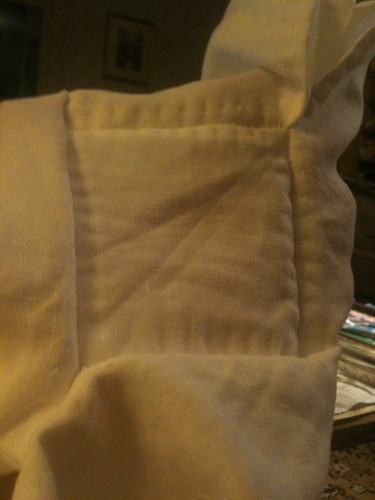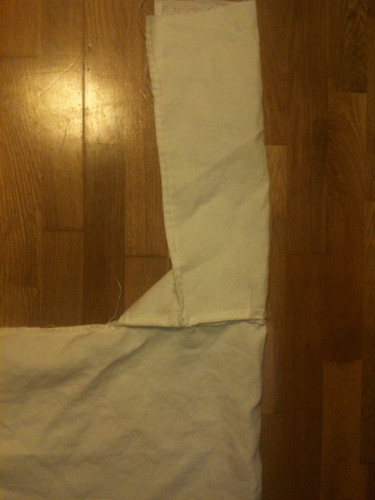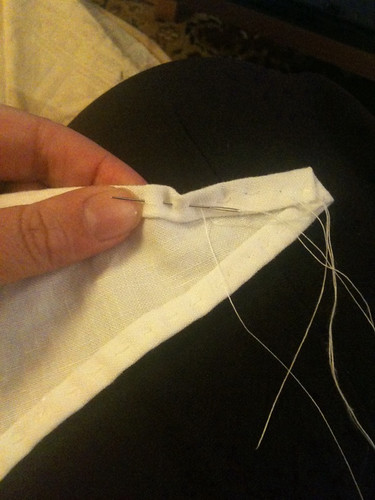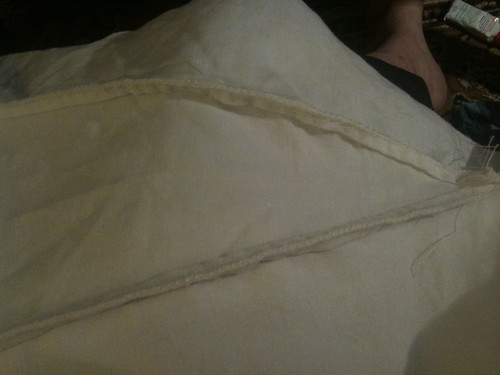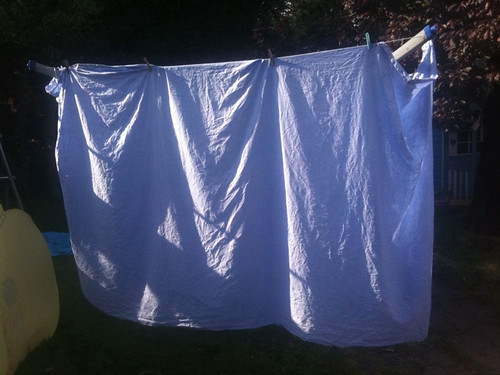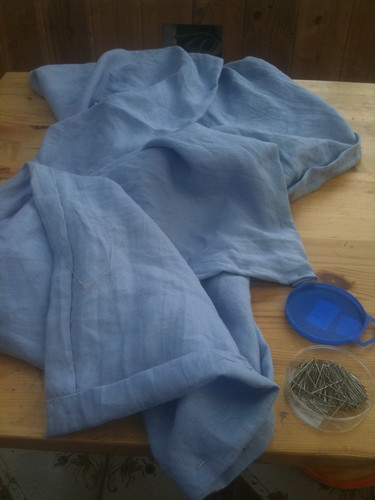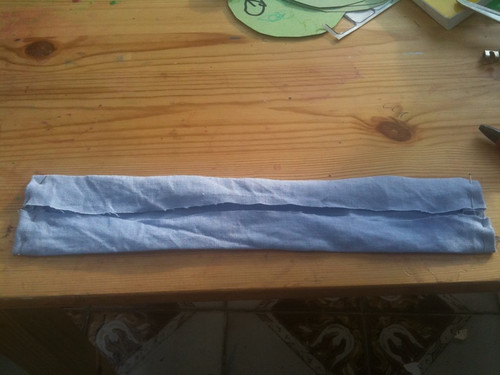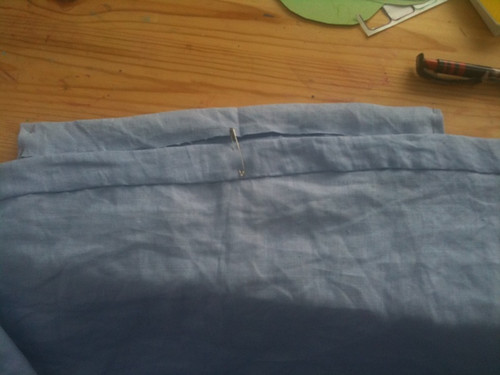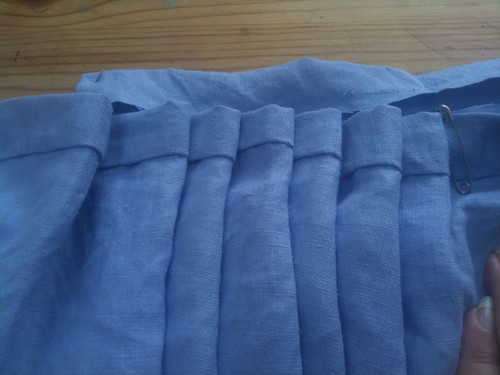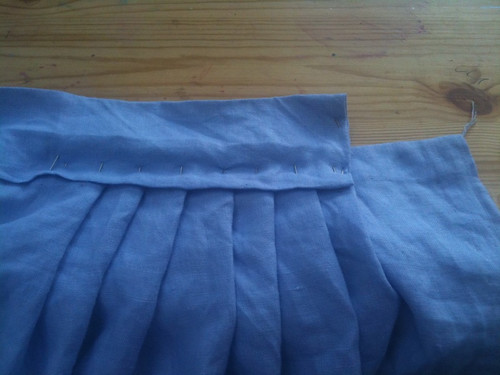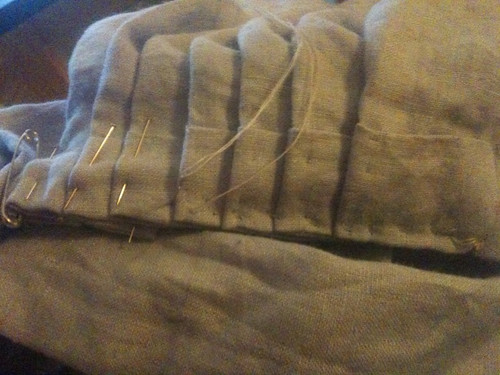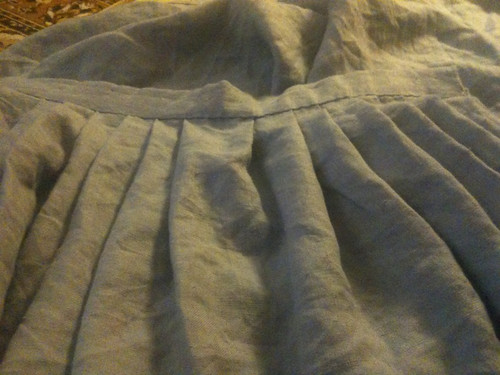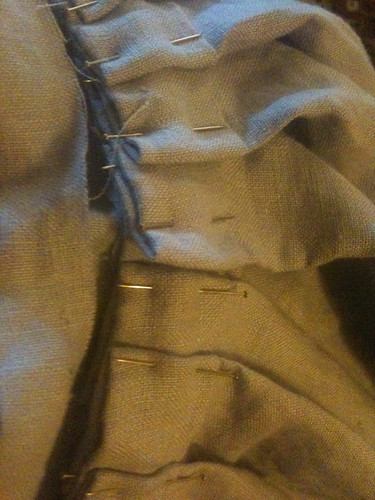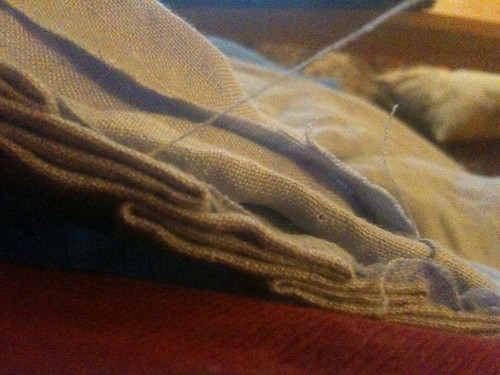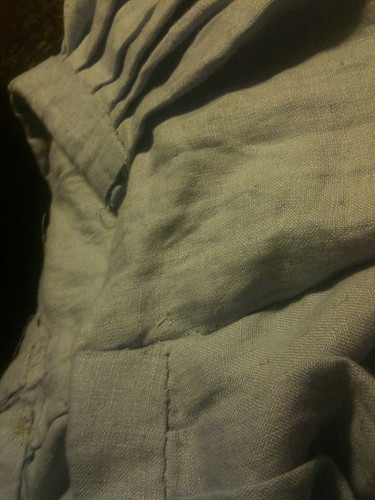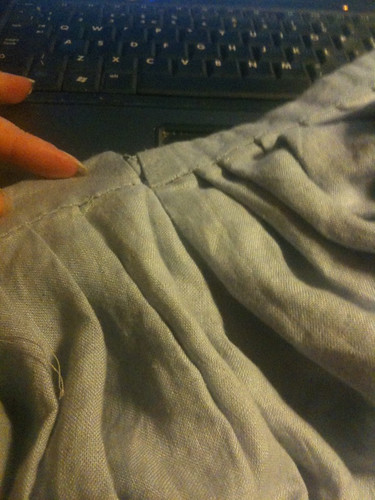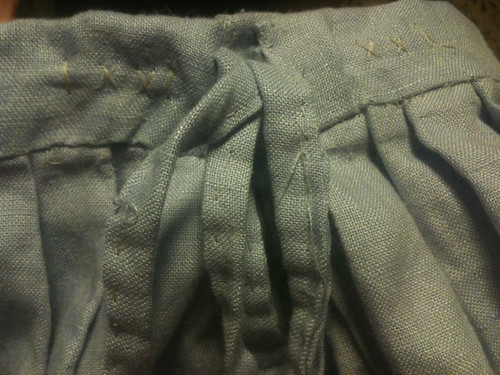Kentwell costuming – The Petticoate – Adult version
Just remind that for costume making I will be following the tudor costume page fairly slavishly the tudor tailor book and nearer the time costume elves [!] for the difficult bits I am currently not a re-enactor, but have visited Kentwell [see preamble] and we are really keen as a family to join the tudors. I plan to make a shift and petticoat for each of us girls, a shift for DH by Xmas, and 2 shifts each before the first open day in feb [ie majority of linens, at my own risk as may well not be accepted] this is because there is a huge amount of sewing to be done, and i think if you are any more than 2, to try and fit it all in after acceptance is really a tall order and hard work.
This means that the steps detailed here are not originating from my brain, but the tudor costume makers, though some of the mistakes and how to avoid unfortunately did :blush: . The tudor costume page has unfortunately got some non-working links, and since it was last updated a fair while ago there are a few non-completed bits. This wasn’t a problem for petticoates though. Nothing detailed here seems particularly at odds with costume notes from a prev year.
Anyone thinking of making clothes for re-enactment, please check with your group the ‘rules’ on materials, colours and look. different tudor years have different styles – tho less so for poor, especially poor kids. following these notes does not guarentee acceptance of clothing by Kentwell or any other group, but may help a total novice such as myself. I had never made any clothes before these – a hint of my novicitude. I wrote this initially in Oct 2011, but have added in the things that had I had known I would have done differently – mostly in italics 
See first the Petticoate – Children’s version, as I am building on that knowledge to do this one.
* ah, well here is a thing, i made this beautiful petticoat just like this, went to get help for my kirtle, and instead [or as well] ended up cutting this up and attaching it to a boned bodice. this is a remarkably good think for a more buxom figure. there is debate over boned bodice for the poorer such as myself, but it has huge advantages in support and then simplifying the making of my kirtle. sooo… read this and it will describe my lovely petticoat, and then the boned bodice version [well reeds actually] and then make a decision as to which you may assay to make and start at that point. NB my previous comment on the kids petticoat about nomenclature, coloured or otherwise linen and red wool]*
The Material
I am using a mustard/turmeric coloured 100% Linen mediumweight. I have washed it and hung it. It doesn’t seem to have shrunk much either. It is more scratchy than the linen shirting, but allegedly it will soften up with use. Having made the whole thing, this material size of 2.9 x 1.5 will easily make any adult size as it has succesfully made a plus size. in fact, 2.5m would be enough if you don’t need side plackets or are smaller and still want them and make it more like the childs one, but would like it reasonably pleated and thus good leg mvt. *actually, 2m would be enough for the skirt even plus size, as it doesn’t have to be so pleated. the pleats are so you can do a good stride, 2m is enough to stride  this could be made as a single rectangle, or piece fabric up to that as linen often in 150cm width*
this could be made as a single rectangle, or piece fabric up to that as linen often in 150cm width*

Measuring Up
this time my material length is only 2.9m by 1.5 . i thought i would go for a x3 mark up on my waist, but my waist is not tiny. another thing is that i am hoping to reduce its dimensions between now and kentwell. so, humming and hawing, i have decided to make the waistband potentially 2 inches each half less than i am [by 4 inches in total] and have a placket each side of 4-6 inches [so 8-12 expansion] and mock pin it and see what that seems like, or whether to reduce the placket bit.I am aiming to make this a size 22-26+ is as this, unfortunately is my size variation. Though if i ever get less than 22 i can celebrate with a new petticoat 
cutting and hemming the rectangles
so today i have cut the 2 main panels at the full material width of 150 being the waist and the length of 120cm. Then from the remaining material I have cut the 2 placket inserts of 20cm by 120cm – I will deal with these later  . This time, perhaps due to less material and it being stiffer, my lines are far straighter and neater, and as expected it has made the whole process easier. Being on my second skirt also easier as I didn’t need to reference back to the tudor costume page. I just hemmed the sides this time, rather than mistakenly the whole lot!! I will hem the bottom at the very end of the dressing process when I have made a kirtle and have an understanding of what length to go to and then update this post! Because it has such a nice selvedge at the sides, I only turned over rather than a proper hemming – again giving me more material.
. This time, perhaps due to less material and it being stiffer, my lines are far straighter and neater, and as expected it has made the whole process easier. Being on my second skirt also easier as I didn’t need to reference back to the tudor costume page. I just hemmed the sides this time, rather than mistakenly the whole lot!! I will hem the bottom at the very end of the dressing process when I have made a kirtle and have an understanding of what length to go to and then update this post! Because it has such a nice selvedge at the sides, I only turned over rather than a proper hemming – again giving me more material.
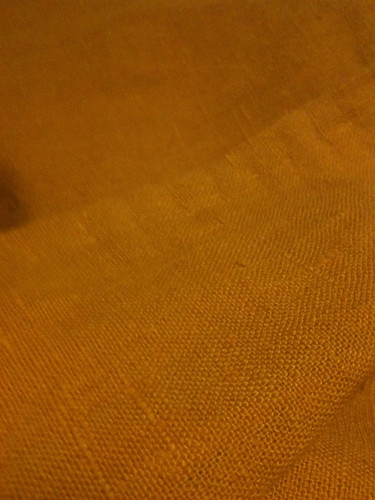
Preparing the Waistband
I think I was overconfident here, being so happy with my rectangles and plackets. I had decided that I would like a wider waistband than the child one I had made, so ‘cut three inches instead of two’ for the depth, this was entirely wrong!! I had cut 4 for the childs one, which gave an inch waistband, so should have cut 5 to give 1.5 [or 6 if planning to double the material fully] argh!!!! ANyway, I made it 24 inches long [i am sorry i swap between inches and cm all the time] . preparing the turnovers. I did this 2ce, one for front and one for back before realising the mistake. If I had a lot of material i would have recut. However, I know material is going to be tight, so I have stuck with it.
SO doing the folds, I only turned over the edges 1/2 and inch rather than the full to the middle inch, and the ends did fold in an inch, giving me 22 inches by 2 inches, which will leave me with an inch waistband depth again. I hope the linen isn’t too unravelly! Like before I found the middle and marked it, decided to start my knife pleats 3 inches either side and then have the pleats 1 inch apart, so marked these also. I did this twice. Luckilly I realised this in the next step, because of course the back doesn’t want a 6″ smooth bit across the back, and so when I do this again, I will mark at inch steps all across the back band  . I also realised this skirt would be way too big for if I shrunk, so took the waistband down to 20 inches front and back!
. I also realised this skirt would be way too big for if I shrunk, so took the waistband down to 20 inches front and back!
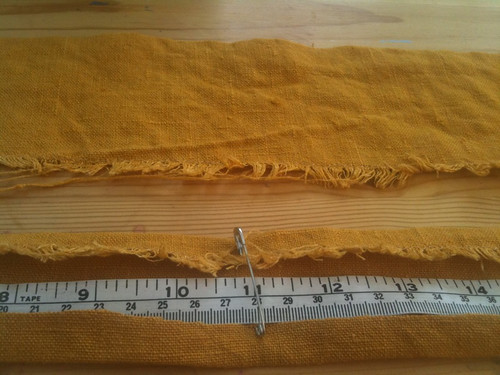
Pinning the Pleats
I have decided that I enjoy pinning  It might be my favourite bit. Making sure that the pleats are crisp and even
It might be my favourite bit. Making sure that the pleats are crisp and even  . Having done the front, I turned to the other waistband and narrowly avoided my other mistake. SO I had 3 inches smooth either side and then knife pleats going away from the centre that went forward 1 inch for the first, back 3/4 inch and then forward 1.75 inches and did a tiny bit of adjustment for the last few pleats. For the back I pleated towards the side [away from the middle] and went forward an inch for the first, back for 1/2 inch and forward 1.5 with some adjustment towards the end. I then looked at them both, and although I liked the look of the front, I didn’t like the look of the back. SO I took out the 1st pleat from the middle on each side and turned them, so I have a box pleat to start with. I think this looks a lot better.
. Having done the front, I turned to the other waistband and narrowly avoided my other mistake. SO I had 3 inches smooth either side and then knife pleats going away from the centre that went forward 1 inch for the first, back 3/4 inch and then forward 1.75 inches and did a tiny bit of adjustment for the last few pleats. For the back I pleated towards the side [away from the middle] and went forward an inch for the first, back for 1/2 inch and forward 1.5 with some adjustment towards the end. I then looked at them both, and although I liked the look of the front, I didn’t like the look of the back. SO I took out the 1st pleat from the middle on each side and turned them, so I have a box pleat to start with. I think this looks a lot better.
edited to add: it is clear that if you want to box pleat a separate placket in, the seam should not be inline with the waistband, but a centimeter beyond this to give the best appearance. ie if you are adding a separate placket, make your main bit protrude beyond the waistband by a centimeter! Even if you are using no extra material as a placket, but having one side protrude beyond before sewing to the other panel, i suggest the seam is a centimetre beyond the waistband
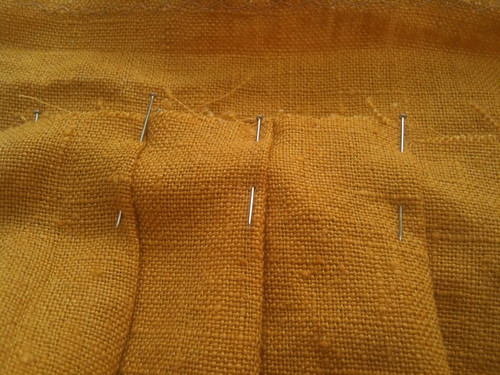
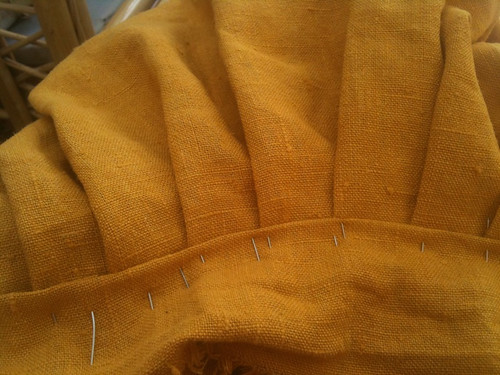

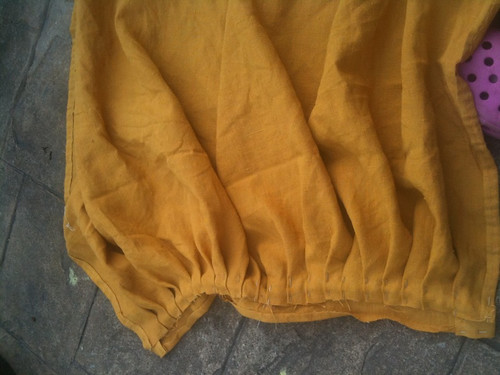
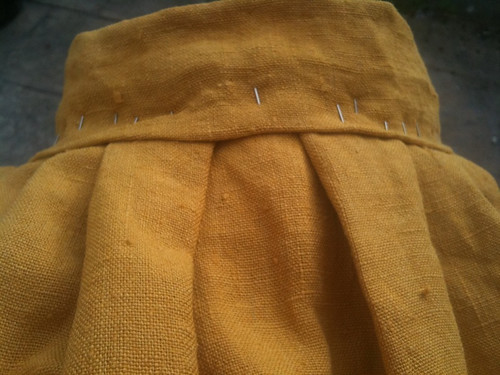
Sewing the skirt to the waistband
This is nice and easy. i have hemmed the waistband onto the pleats on the outside as I think the tudor costume page suggests, and then decided just to hem the other side might be a bit weak, so after hemming the good side, on turning back over I did a running stitch between the pleats and the fold up of the waistband, so invisible from the outside, but hopefully a bit of extra strength. I removed all the pins – this time I had made sure all the heads of the pins were uppermost.
This time on folding over I have only pinned the inside view waistband to pleats. This is partly because if there is any material spare, I may consider adding a ribbon along if I can be bothered! But it is also so that if i do box pleat in the placket, it can be done under the waistband and much much neater  I do like how the pleats are looking.
I do like how the pleats are looking.
The Placket
If anything, this might be the controversial bit of building this costume. But it does seem a very sensible design to allow some flexibility of the waistband size. I am not a tudor costumier, or even amateur researcher. I am just someone trying to make something sensible, comfortable and with a bit of give to it, considering I tend to not fix on a constant size. It seems likely that I will want to use the clothes for more than one year, and no doubt due to the close fitting nature of the kirtle some unpicking and readjusting may need to happen each year. I would like to minimise the bother tho
[ and in fact, in my head I am trying to adapt the kirtle skirt bit too if possible so the adjustment would be to bodice/stitching the 2 bits together]
I digress. I have these 2 bits of 20cm [8 inches] by 120cm and will hem sides and top to take it to 6 inches by 120cm. of these, and then intend to whipstitch them to the front and back to make a side panel on each side, and then consider a small pleat under the waistband on each side, giving it a box pleat appearance and 4 inches of extension from the placket on each side. This should enable it to be easy to get on and off and a varying waist size from 40-48 inch, so a 22 – 26 dress size.
However,if i was thinner, or had material that could have been cut so that I could have constructed the placket bits like in the childs version, this would be far easier!! 2 more bits of material = lots and lots more hand hemming! *in fact I could have done – 1 x 200 or 2 rectangles of 100cm is all I needed*
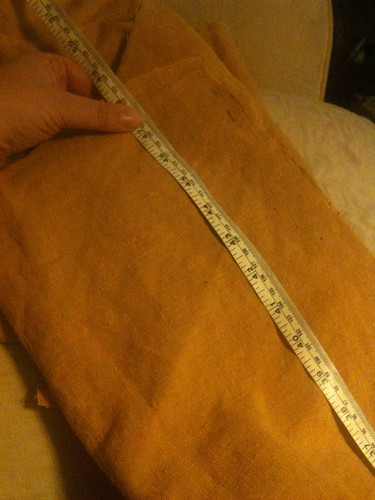
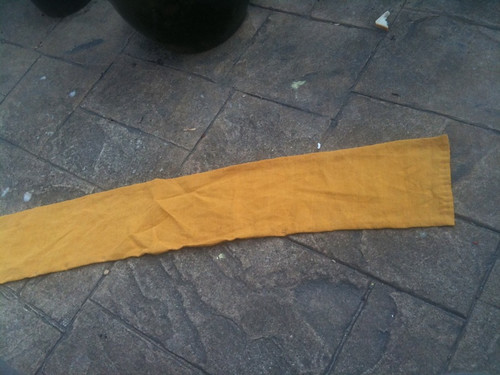
Whipstitching the sides
*edited to add: it is clear that if you want to box pleat a separate placket in, the seam should not be inline with the waistband, but a centimeter beyond this to give the best appearance. ie if you are adding a separate placket, make your main bit protrude beyond the waistband by a centimeter! Even if you are using no extra material as a placket, but having one side protrude beyond before sewing to the other panel, i suggest the seam is a centimetre beyond the waistband I didn’t do this, but even better, don’t have a separate bit of material, have 1 rectangle of 2 m [or 2 rectangles of 1m each or a 150cm and a 50cm ]*
i have put this higher up in case someone is actually reading this as instructions, so you don’t come to this and have a ‘doh!’ moment like I have. I think the box pleating it looks nicer – and i have made that calculation for the material! But am going to discuss with friends who actually know something about sewing before doing it, as the whipstitched seam doesn’t look so good, or sit so nicely bent back like that. [grr to the possibility i might break a cardinal rule and unpick!] for those that might comment whilst i am deciding, i will put pics here. Box pleating it also takes the placket down to 3 inches each side as well… I have tried it on, v gently over pins and it is still loose enough to have some room to grow, tho i hope to shrink!! And, i can get it on, more importantly 
Making the linen ties
I have the smallest bit of material left! I have enough to make 4 linen ties of 2 inches wide and 19 inches long. These I will fold as per waistband, so the edges are folded into the middle and then the whole thing in half so raw edges buried, and then tack along.
I did make it box pleated, as looks overcomes everything else  and have pins along the seams to hold them neatly in the box, and may iron… you can see both box pleated placket and linen ties
and have pins along the seams to hold them neatly in the box, and may iron… you can see both box pleated placket and linen ties
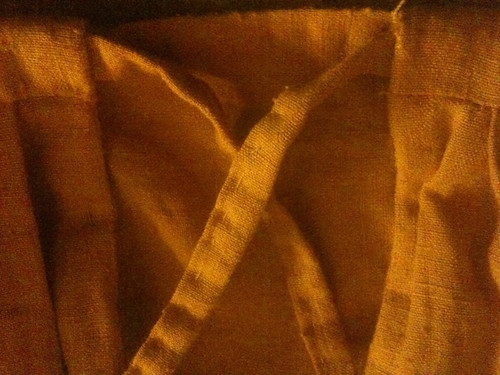

Petticoate-Bodies
And that is how it was planned to end, but… I sought help over making my kirtle, worried about the boning etc, and was advised that actually i should have a petticoate bodies instead. this would support me well, and make the kirtle bit easier. These were def worn by the rich in elizabethan times, not so much evidence for the poor, however then the poor didn’t really get much opportunity to become plus size, and i didn’t want to look ridiculous nor feel uncomfortable, so happy to go with the advice. *This may not be appropriate for you/your reenactment group etc*
If I had planned this from the start though, I would definately have used red lighterweight wool for the skirt part. Instead, I unpicked my petticoat – and all those lovely pleats :sob: and cut 2x2m rectangles x my waist to ankle, rehemmed it 2 short sides only. Homestly, you could do this as a single rectangle of 2m. Then my fab helper started me off on the reeded bodice part. looking at all the sewing ahead, i decided this was indeed the moment for a sewing machine.
Making a toile
firstly, you need to make a toile. Now this is the pattern of the material in a non fraying cheap material – polyester etc. she made this, I have no pics, by putting her bodice on me, cinching it to where it needed to go, then draping all the material over me, cutting out the shape that would suit me and redraping and refining. This turned out to be a front half and a back half. the sides were left so there would be a 2 inch gap between front and back half of material which will be laced together. If you are a novice, you MUST HAVE HELP here. If you are Kentwelling, you either visit an ‘elf’ who will help you make one of these, or you opt for the petticoate above and go to a kentwell costume day or local elf to make a toile for the kirtle bodice and boning. There is an art to toile making. It is relatively straightforward in the bustless, and where you are following the body, but where you are aiming to control the body, it needs someone who knows what they are doing to get the best result.
When you have your toile, then cut it out in canvas x 2 or heavy linen x 2 if you are planning to handsew the channels so it can be seen, or in both canvas x 2 as the hidden inner bit and linen x 2 which shall be your outer showing bit – ideally in natural or muted linen. when you cut you do need to add seam allowance – which is about 1cn all the way round. note that it is best to pin the toile to the fabric on the flat, chalk out the outline for future sewing reference and then cut out on the flat. [i do have pics of doing easier toiles for example the pourpoint later on]
Boning the bodice
Having got your toile, used it to cut out your heavy material [canvas/linen] you need to sew the 2 fronts together and the 2 backs together along the bottom but not sides shoulder straps or top. sew along your marked chalk lines. pin enough together elsewhere so it is smooth and flat [and iron  ]
]
You now want to look at your boning. mark out on the material [in chalk if it will be visible, biro or anything if you are covering over the top] the pattern for your boning – mine has some boning at the back – please see – and the entire front. the boning is vertical at the front and diagonal from top of sides going down towards the middle and reaching the bottom edge pretty much in a line down from nipple. Have a good look at the pics to see what I mean [if you aren't using someone knowledgeable to help you, are you sure of this? as an utter novice I would have really struggled to do this from notes or pics] . look at what you are boning with. I was given flat oval reed to use of just under 1cm width. Therefore I made channels of 1cm width with sewing machining [open at the top] in the direction of my markings



The pictures above show sewing the channels, and also what my front and back look like. The next step is to take your bendal of flat oval reed, and cut to shape so slide a bit down each channel. then sew along the top to hold them in place. Iam not sure whether it matters which way the reed faces, or even if flat reed would be as good – probably – but i had the flat side facing in. below is measuring the reed against the channel.
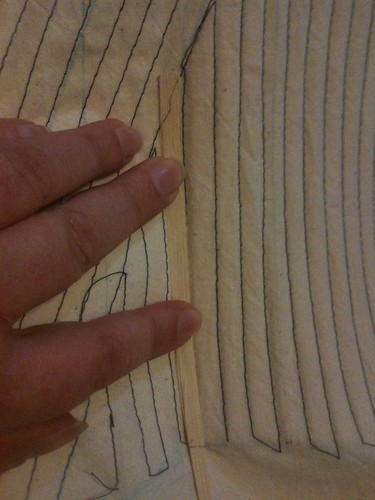
Finishing the bodice with canvas
nearly there  now pin your linen covering onto the canvas reeded part. you need to pin both the linen bits on the op – so it goes linen-linen-canvas/canvas . then you sew sides, shoulder strap sides and the top together, leaving the bottom unsewn, and the ends of the shoulder straps. then turn inside out by taking the uppermost linen only – leaving you with linen – canvas/canvas – linen with all the seams etc hidden. the shoulder straps are difficult to turn inside out. so here are the pieces lined up; turned inside out and sewn up
now pin your linen covering onto the canvas reeded part. you need to pin both the linen bits on the op – so it goes linen-linen-canvas/canvas . then you sew sides, shoulder strap sides and the top together, leaving the bottom unsewn, and the ends of the shoulder straps. then turn inside out by taking the uppermost linen only – leaving you with linen – canvas/canvas – linen with all the seams etc hidden. the shoulder straps are difficult to turn inside out. so here are the pieces lined up; turned inside out and sewn up

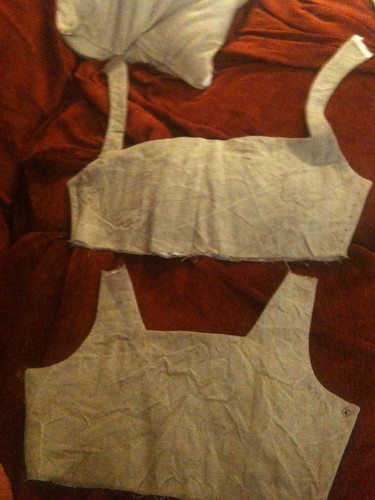
not quite done – eyelets! I might do an eyelet post actually. but in short, you need to sharpen a screwdriver about 1cm diameter into v v sharp point, push this through all the material, and then sew this hole open. My DH made better eyelets than me

Then try it on, and work out where to sew the shoulder straps together – you can see these are pinned at the back. a line was drawn, the excess bar .5cm cut off, the pieces turned in and sewn shut with whipstitch, and then the 2 pieces sewn tightly together with whipstitch or ladder stitch for each side. Just look how well it supports! It is tight, but actually comfortable – which was a shock to me!
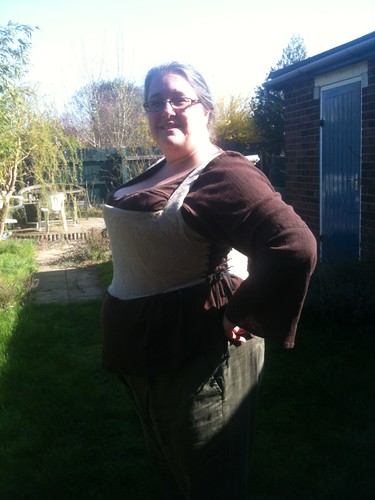
Adding skirt to bodice
so… like before pin pleats! these are going to be knife pleats, with a smooth panel at the front about a handswidth, and then going out to the sides. You are going to leave 5-10cm on each side free and flapping – this is so you can get it on and off over your head. rather odd looking. then pin the pleats to the bodice so that you pin the good front side of the skirt down against the good back side of the bodice so that you haven’t folded under the bodice and the skirt goes upwards over the bodice.
argh to not taking a pic that is clear of this.[i mght draw a pic, photograph it and add] but the top edge of the skirt is directly on top of the bottom of the bodice. you must make sure that the front linen of the bodice isn’t incorporated. This is so you can easily just sew along the whole thing when pinned with a sewing machine [2ce for luck] and then flip the skirt down so that the skirt and back linen and canvas are all inverted in.
you then fold under the front linen and ladder stitch or whipstitch that into place. These are the photos I took – please link to better ones in comments if you have them. You can see the line of stitching and flipped up skirt material in the top picture, and that I am whipstitching the top down [it is visible so hand sewn] over the top. All the seams will be hidden [antifray] all visible stitches hand sewn. Have a look at my kirtle and jerkin pages too if this doesn’t make sense, tho the photos not v clear there either perhaps.

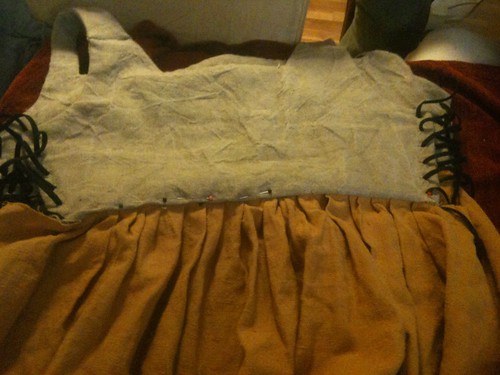
Finished product
the side flapping bits can be left, or you can use hooks and eyes to make look good, or just tuck under. it works like the placket in version 1 effectively. It is very comfortable and v adjustable.
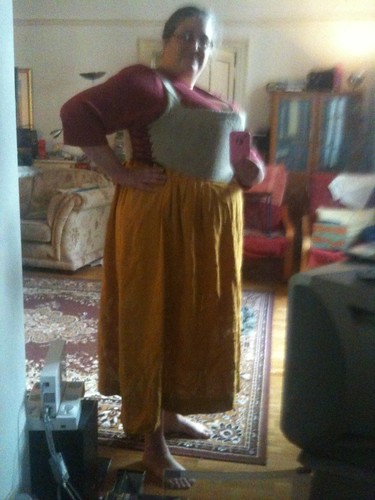
![]() . however, the clothing was passed for Kentwel 1556 . i have also been told that a run and fell or a french seam would be stronger for shift seams, but is a bit beyond me, and the seams of my shifts did hold
. however, the clothing was passed for Kentwel 1556 . i have also been told that a run and fell or a french seam would be stronger for shift seams, but is a bit beyond me, and the seams of my shifts did hold ![]()
![]() it has been hot washed 2ce and dried, so shouldn’t be more shrinkage [I hope!] It is not at all bluey in real life, even if it does looks so on photos. Hot washing does shrink the weave and tightens it. Ivory white for lower classes or natural is probably better than whitey white.
it has been hot washed 2ce and dried, so shouldn’t be more shrinkage [I hope!] It is not at all bluey in real life, even if it does looks so on photos. Hot washing does shrink the weave and tightens it. Ivory white for lower classes or natural is probably better than whitey white.![]() I did 2 small box pleats in total.
I did 2 small box pleats in total.![]()
![]() . you need a minimum of a shift per 2 days in the ideal world. if it is sunny, the washerwomen at kentwell can wash and return you a shift in 2 days, so you might get away with 2. however… the more the better really.
. you need a minimum of a shift per 2 days in the ideal world. if it is sunny, the washerwomen at kentwell can wash and return you a shift in 2 days, so you might get away with 2. however… the more the better really.
